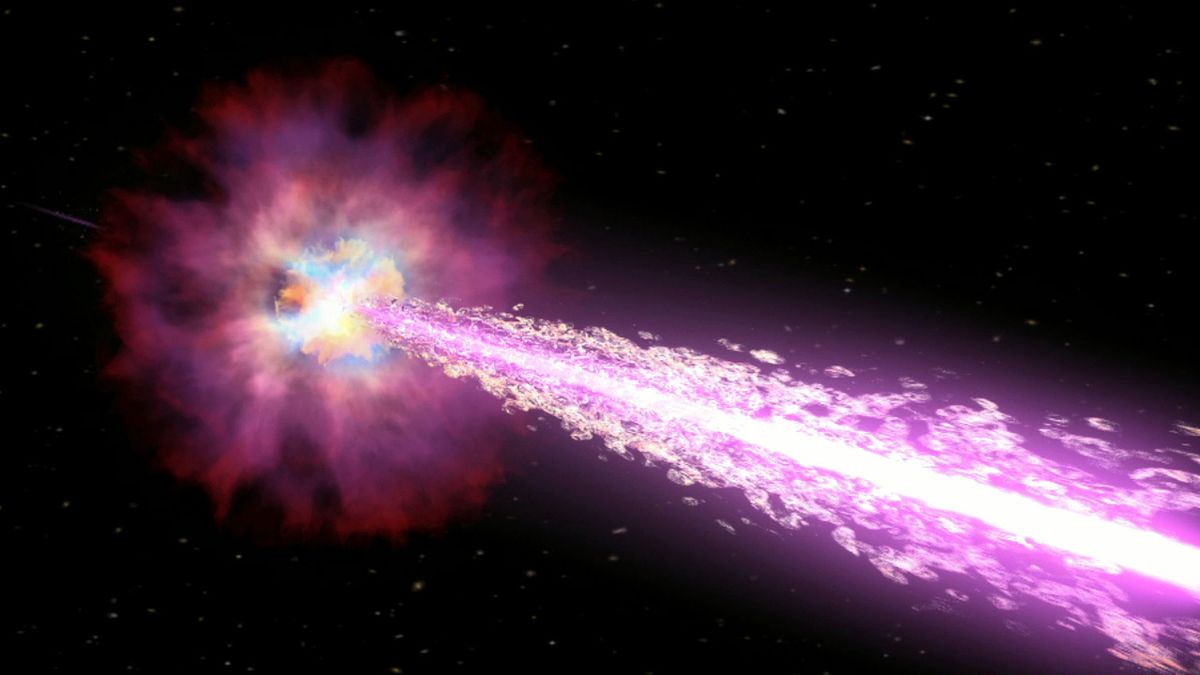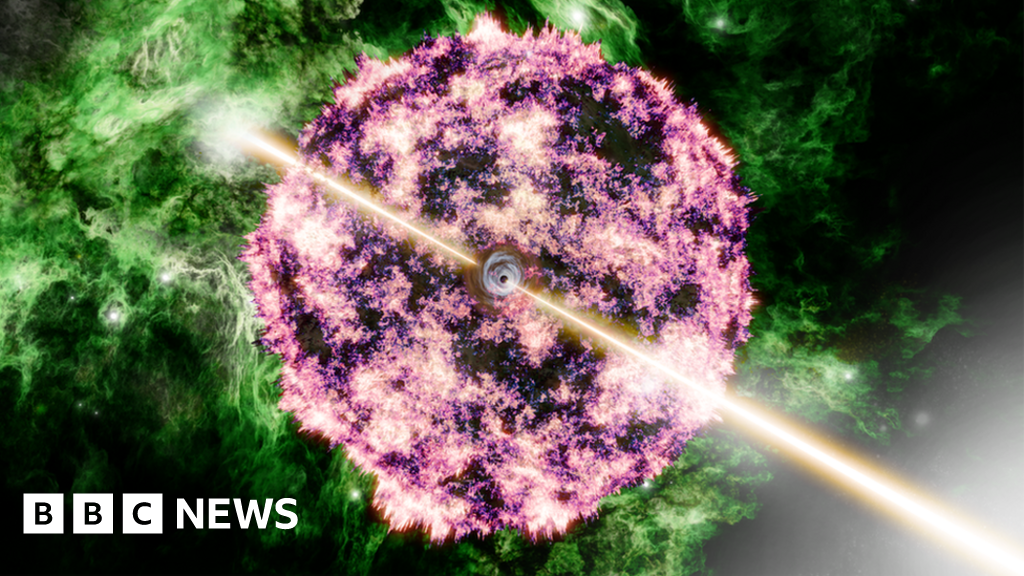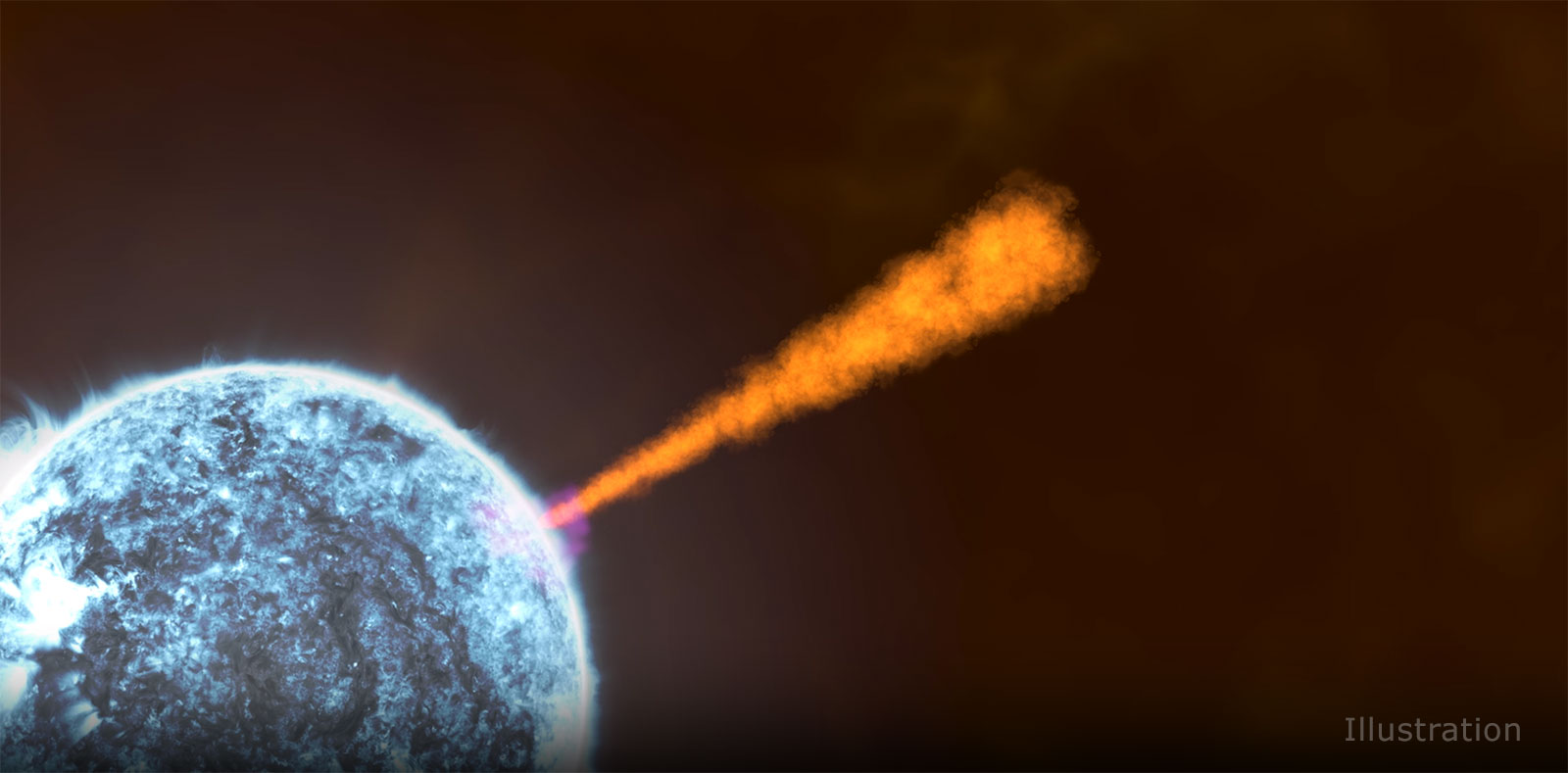The cosmic phenomenon known as the BOAT, or Brightest Of All Time, has excited astronomers and astrophysicists since its discovery in 2022. A recent breakthrough, led by a team of scientists utilizing the James Webb Space Telescope (JWST), shows its cause of brightest ever Gamma-ray Burst.

Also Read: Russia Aborts the Launch of Angara-A5 Space Rocket from Vostochny Cosmodrome
On October 9, 2022, astronomers witnessed a brightest ever Gamma-ray Burst, emanating from a supernova in the constellation Sagitta, located 2.4 billion light-years away.
This event, called the BOAT, dazzled observers with its unparalleled brightness, surpassing any known cosmic explosion by a factor of ten.
Through observation with the JWST, scientists traced the BOAT’s genesis to a massive supernova resulting from the collapse of a giant star.
The supernova’s magnitude appeared ordinary, leaving researchers perplexed as to the source of the BOAT’s extraordinary luminosity.
Despite the supernova’s association with gamma-ray bursts (GRBs), no traces of heavy elements like gold or platinum were detected in the explosion’s aftermath.
This revelation challenges existing theories positing supernovas as primary producers of these elements.
The absence of heavy elements around the BOAT’s source suggests alternative mechanisms for their synthesis, raising questions about the role of supernovas in cosmic nucleosynthesis.
Researchers speculate that other channels, such as neutron star collisions, may contribute to the enrichment of the universe with heavy metals.
One proposed explanation for the BOAT’s luminosity is the presence of a narrow relativistic jet, directing energy in a focused beam akin to a flashlight’s column.
Also Read: Scientists Discovered Colossal Ocean 700km Below Earth’s Crust
Utilizing the JWST’s Near Infrared Spectrograph (NIRSpec), scientists inspected the BOAT’s spectral signature, revealing elemental compositions indicative of supernova remnants.
Despite initial difficulty due to its blinding brightness, the JWST succeeded in pinpointing the source of the BOAT to a supernova resulting from the collapse of a massive star.
Led by Peter Blanchard of Northwestern University, the research team utilized the JWST’s Near Infrared Spectrograph (NIRSpec) to analyze the supernova’s afterglow, revealing telltale signatures of elements like oxygen and calcium.
No evidence of heavy elements, such as gold and platinum, was found in the supernova debris. This discrepancy challenges prevailing theories regarding the production of heavy elements in supernovas.
Dr. Tanmoy Laskar of the University of Utah suggests that the BOAT’s brightness may stem from the narrow, focused nature of its relativistic jet, to focusing a flashlight’s beam.
The absence of heavy elements raises questions about the relationship between gamma-ray bursts (GRBs) and supernovas, suggesting separate processes at play.
Prof. Catherine Heymans addresses the importance of such discoveries, heralding a new era of scientific inquiry into the nature of the universe. Dr. Peter Blanchard and Dr. Tanmoy Laskar underlined the importance of continued research.
Also Read: Moon to Get its Own Time Zone by the End of 2026























